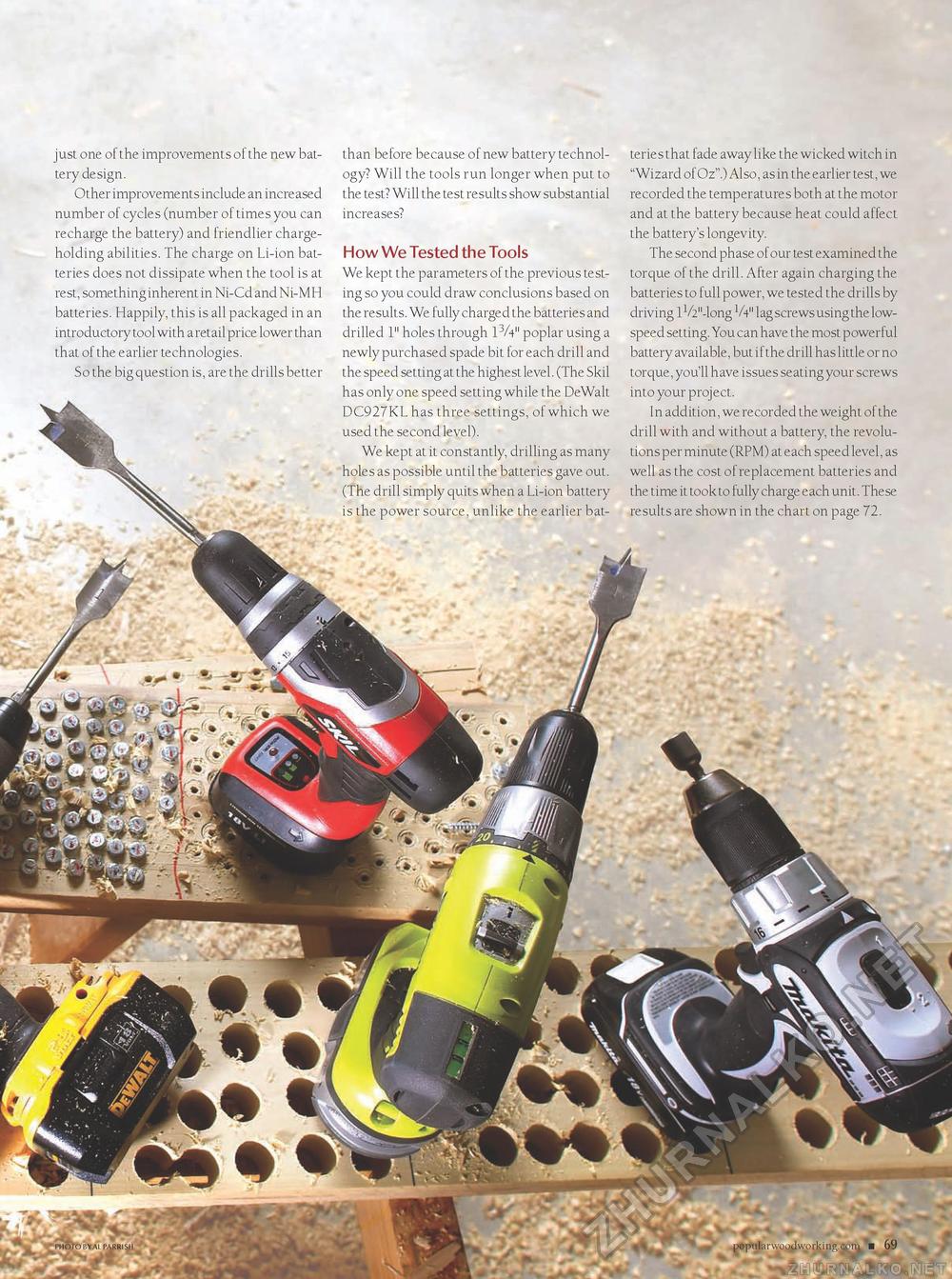Popular Woodworking 2008-04 № 168, страница 79
just one of the improvements of the new battery design. Other improvements include an increased number of cycles (number of times you can recharge the battery) and friendlier charge-holding abilities. The charge on Li-ion batteries does not dissipate when the tool is at rest, something inherent in Ni-Cd and Ni-MH batteries. Happily, this is all packaged in an introductory tool with a retail price lower than that of the earlier technologies. So the big question is, are the drills better than before because of new battery technology? Will the tools run longer when put to the test? Will the test results show substantial increases? How We Tested the Tools We kept the parameters of the previous testing so you could draw conclusions based on the results. We fully charged the batteries and drilled 1" holes through 13A" poplar using a newly purchased spade bit for each drill and the speed setting at the highest level. (The Skil has only one speed setting while the DeWalt DC927KL has three settings, of which we used the second level). We kept at it constantly, drilling as many holes as possible until the batteries gave out. (The drill simply quits when a Li-ion battery is the power source, unlike the earlier bat teries that fade away like the wicked witch in "Wizard of Oz".) Also, as in the earlier test, we recorded the temperatures both at the motor and at the battery because heat could affect the battery's longevity. The second phase of our test examined the torque of the drill. After again charging the batteries to full power, we tested the drills by driving lV2"-long V4" lag screws using the low-speed setting. You can have the most powerful battery available, but if the drill has little or no torque, you'll have issues seating your screws into your project. In addition, we recorded the weight of the drill with and without a battery, the revolutions per minute (RPM) at each speed level, as well as the cost of replacement batteries and the time it took to fully charge each unit. These results are shown in the chart on page 72. "phsto by al ^ f^ ■pQpnlarwoodworking.jom" 69 |








